Timeline of life extension
This is a timeline of life extension, attempting to describe significant and illustrative events on the topic, covering advocacy, experiments, some scientific research, and industry. For more content on life extension research, visit Timeline of senescence research and Timeline of calorie restriction.
Sample questions
The following are some interesting questions that can be answered by reading this timeline:
- What are some of the multiple approaches having been tried or researched in order to attain life extension in organisms?
- Sort the full timeline by "Approach (when applicable)".
- You will read from ancient beliefs, such as as magic and the Fountain of Youth, towards modern proposed scientific approaches such as regenerative medicine and nanotechnology, and awards.
- What are some notable organizations engaged in life extension?
- For non-profits working towards life extension, sort the full timeline by "Event type" and look for the group of rows with value "Organization (non-profit)".
- For private companies engaged in the development of strategies to combat aging, sort the full timeline by "Event type" and look for the group of rows with value "Organization (private company)".
- For public companies, sort the full timeline by "Event type" and look for the group of rows with value "Organization (public company)".
- What are some sample research studies having been conducted with the purpose to attain life extension?
- Sort the full timeline by "Event type" and look for the group of rows with value "Scientific development".
- For more content on research, see Timeline of senescence research.
- What are some notable publications specializing in the topic of life extension?
- Sort the full timeline by "Event type" and look for the group of rows with value "Literature".
- You will see some illustrative publications discussing the topic and proposing different aproaches, ranging from healthy habits to nanotechnology.
- What are the most important prizes awarded to efforts to attain life extension?
- Sort the full timeline by "Event type" and look for the group of rows with value "Recognition".
- You will mostly see people being awarded the Breakthrough Prize in Life Sciences, the largest award in the sciences.
Other events are described under the following types: "Congress", "Documentary film", "Early development", "Funding", "Industry", "Legal", "Politics", "Public opinion", "Scientific consensus", and "Website launch".
Big picture
| Time period | Development summary | More details |
|---|---|---|
| Before 20th century | Prescientific period | Historical documents on life extension attempts date back to ancient times, when there is no science and superstition is is almost the only approach. The period ranging from the 3rd to 17th century isknown as the period of alchemy. |
| 20th century | Early scientific attempts | Early life extension scientific experiments, although having began around late 19th century, proliferate in the 20th century. Attempts of rejuvenation by methods of cell injections begin in the 1930s. By the 1970s, the concept of what would be called longevity escape velocity is already present in the life extension community.[1] |
| 21st century | Increased anti-aging movement | Modern anti-aging organizations merge and their proliferation multiplies toward the 2000s.[2] During the first half of the 2010s, small political parties appear in different countries, making the promotion of anti-aging technologies part of their political platforms, for example, the Science Party of Australia, and the U.S. Transhumanist Party. In the second half of 2010s official discussions about the possibility of recognizing aging as a disease emerge.[3][4][5][6][7] |
Full timeline
| Year | Event type | Approach (when applicable) | Details | |
|---|---|---|---|---|
| 259 BC–210 BC | Early development | Elixir of youth | Chinese emperor Qin Shi Huang lives. Having united China under his rule, all his life he would persistently search for an elixir of youth and died trying, presumably taking pills of immortality, containing mercury.[8] |  |
| 156 BC–87 BC | Early development | Magic | Chinese emperor Wu of Han lives. This monarch would persistently try to find a way to achieve immortality, mainly by means of magic. He would use services of various magicians and thoroughly recheck their abilities. If he saw that the person is a quack, he would executed him.[9] |  |
| 1513 | Early development | Fountain of Youth | While leading the first known European expedition that would discover La Florida, Spanish conquistador Juan Ponce de León is thought to be looking for the Fountain of Youth as one of the purposes of the expedition.[10][11][12] |  |
| 1550 | Literature | Healthy habits | Italian nobleman Luigi Cornaro writes The Art of Living Long. Translated into English, French, Dutch, and German, this book would become the bible of prolongevity advocates who assert that a long and healthy life is a very real possibility.[9] | 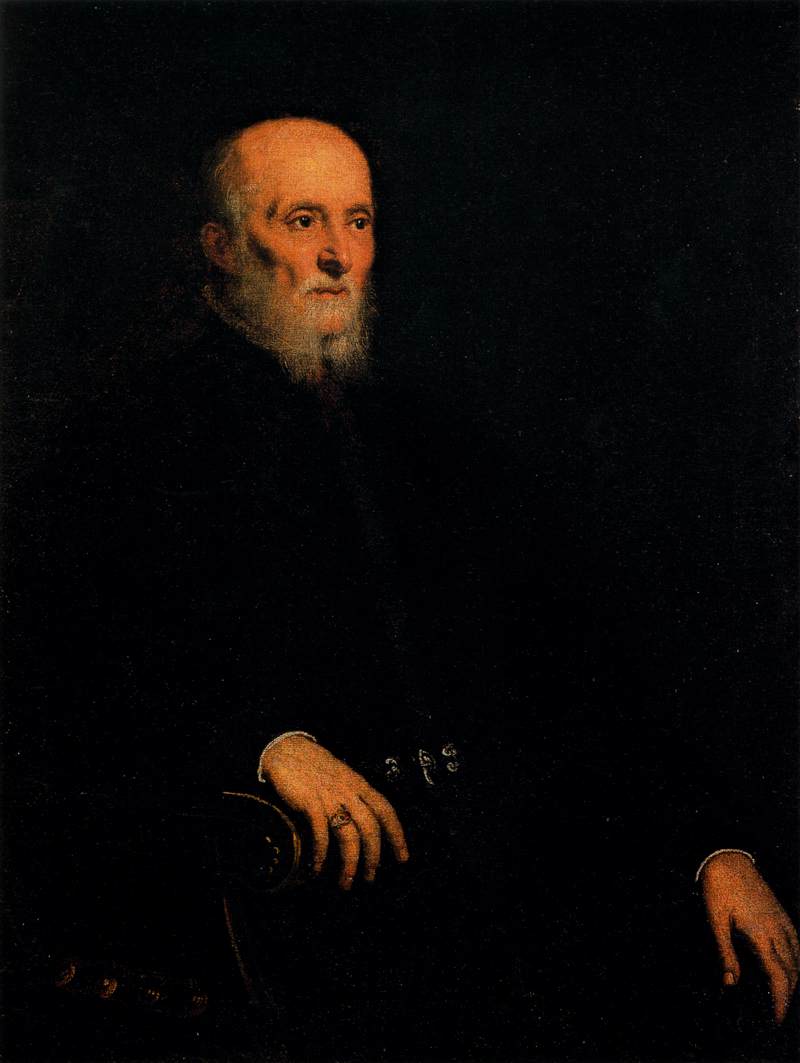 |
| 1889 | Scientific development | Hormone injection | French doctor Charles-Édouard Brown-Séquard conducts a rejuvenation experiment, making himself a few subcutaneous injections from the testicles of young dogs and guinea pigs and claiming that the injections are accompanied by significant and long pain, but then he would observe an improvement of the physical condition of the organism and increase of mental activity. Experiments of other scientists, at first, produce the same results, but later it becomes clear that the period of reinforced activity is followed by a period of decline. This method lays the foundation for the development of hormone replacement therapy.[13] [14][15][16] |  |
| 1913 | Organization | Hygiene and disease prevention | The Life Extension Institute is inaugurated as a longevity research center, with US president William Howard Taft as chairman.[17][2] It describes its philanthropic goal of prolonging human life through hygiene and disease prevention.[18] | |
| 1914 | Scientific development | Testis transplant | Dr. Frank Lydston from Chicago performs human testis transplants on several patients, including himself, saying that there are some rejuvenating consequences (such as returning his gray hair to its original color and improving of sexual performance).[16] | |
| 1910s–1930s | Scientific development | Surgical operations | Austrian physiologist Eugen Steinach tries to achieve rejuvenation effects by means of different surgical operations such as partial vasectomy for men, ligation of fallopian tubes for women, transplantation of testicles, etc. And although later these operations would be found to be ineffective, they would allow researchers to recognize the role of the sexual glands and sexual hormones in the formation of the first and secondary gender characteristics, enrich physiology, lay the foundation for the science of sexology, and would form the basis for sex reassignment surgeries. From 1921 to 1938, Eugen Steinach would be nominated for the Nobel Prize many times, but would never received it.[14][15][19][20] | 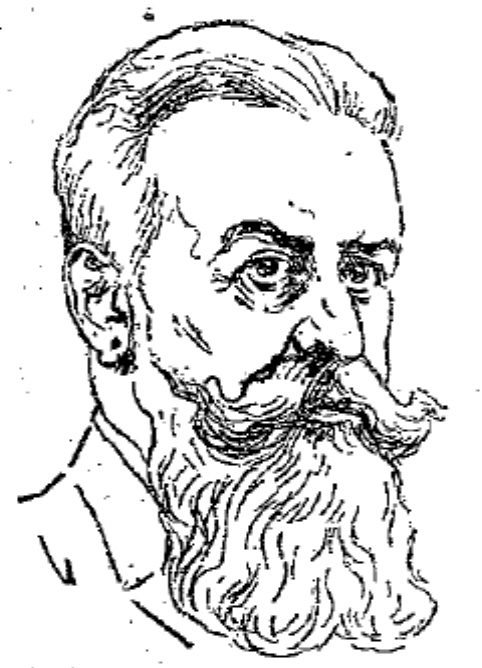 |
| 1926–1928 | Scientific development | Blood transfusion | Soviet physician Alexander Bogdanov conducts experiments on rejuvenation by blood transfusion in the world's first Institute for Blood Transfusion espicially created for that purpose. Bogdanov himself would die during one of the experiments, because at this time little is known about the factors of blood compatibility of different people.[13][15] As of 2021, the institute still exists and is still actively working. |  |
| 1931–1949 | Scientific development | Fresh cell therapy | Swiss doctor Paul Niehans develops the so-called Fresh cell therapy, which consists in mainly the use of live animal embryo organs cells which are injected into the patient with the purpose of achieving a revitalizing effect. These cells are generally extracted from sheep’s fetuses because in comparison to other animals, like pigs, rabbits and cows, sheep are clean animals and rarely contract diseases. Whereas animal cells are not able to be included in human tissue, they can secrete factors for rejuvenating. That's why this rejuvenation technology, despite the harsh criticism, it is practiced to this day.[21][22][23] |  |
| 1933 | Organization | Romanian gerontologist Dimu Kotsovsky establishes in Kishinev the Institute for The Study and Combat of Aging (Romanian: Institutul Pentru Studierea si Combaterea Batranetii), the first institute in the world dedicated to the study of aging. Initially maintained by Kotsovsky's own means, the institute is subsequently recognized by the Romanian government.[24] | ||
| 1936 | Literature | Dimu Kotsovsky in Kishinev launches Problems of Aging: Journal for the International Study and Combat of Aging (German: Altersprobleme: Zeitschrift für Internationale Altersforschung und Altersbekämpfung), the first European journal about aging and longevity.[24] | ||
| 1937 | Scientific development | Antireticular cytotoxic serum injection | Ukrainian Soviet pathophysiologist Alexander Bogomolets creates antireticular cytotoxic serum in the hope to extend life of people to 150 years. Although the drug would not achieve its main goal, it would become widely used for the treatment of a number of diseases, especially infectious diseases and fractures.[13][14][15] |  |
| 1959 | Scientific development | Nanotechnology | American theoretical physicist Richard Feynman publishes essay There's Plenty of Room at the Bottom, proposing the idea of a "medical" use for Feynman's theoretical nanomachines. The idea, originally suggested by Feynman former graduate student and collaborator Albert Hibbs, proposes that certain repair machines might one day be reduced in size to the point that it would, in theory, be possible to (as Feynman put it) "swallow the doctor".[25] | |
| 1967 | Organization (non-profit) | The Immortalist Society is founded. It is devoted to research and education in the areas of cryonics and life extension.[26] | ||
| 1980 | Organization | The Life Extension Foundation is founded by Saul Kent and William Faloon.[27][28] | ||
| 1981 | Organization | The American Federation for Aging Research (AFAR) is founded "to encourage scientists to pursue careers in aging research".[29] | ||
| 1982 | Literature | Durk Pearson and Sandy Shaw publish Life Extension: A Practical Scientific Approach, which discusses various aspects of aging and includes suggestions on how to slow the aging process and improve health.[30][31] | ||
| 1986 | Literature | Nanotechnology | American engineer K. Eric Drexler, one of the founders of nanotechnology, publishes Engines of Creation, which postulates cell repair machines, including ones operating within cells and utilizing as yet hypothetical molecular computers. This could give rise to life extension through the repair of many processes thought to be responsible for aging. | |
| 1987 | Legal | The United States FDA raids the Life Extension Foundation's warehouse, and charges Saul Kent and William Faloon with 27 counts, including that of distributing unapproved drugs, in later dropped charges. In response, Kent and Faloon open the FDA Holocaust Museum, a one-room museum that contains "books and articles about life extension" and comparisons between the FDA and the Nazis.[32] | ||
| 1990 | Organization | Gerontology Research Group | The Gerontology Research Group (GRG) is founded as a global group of researchers in various fields that verifies and tracks supercentenarians. It also aims to further gerontology research with a goal of reversing or slowing aging.[33][34] | |
| 1992 | Organization | The American Academy of Anti-Aging Medicine (A4M) is founded "to promote the anti-aging technoscience agenda". As of 2020, A4M has 26,000 members. It convenes two annual world congresses with several thousand attendees, offers research fellowships and two masters programs.[29][35] | ||
| 1998 | Literature (journal) | Bimonthly peer-reviewed scientific journal Rejuvenation Research is launched.[36] | ||
| 1999 | Organization (privately company) | Biotechnology | Sierra Sciences is founded by American molecular biologist William H. Andrews in Reno, Nevada as a biotechnology company with the goal of preventing and/or reversing cellular senescence.[37] | |
| 1999 | Literature | English scientist Aubrey de Grey publishes The Mitochondrial Free Radical Theory of Aging, which introduces the term "engineered negligible senescence".[38] |  | |
| 2001 | Literature | S. Jay Olshansky and Bruce A Carnes publish The Quest for Immortality: Science at the Frontiers of Aging, which attempts to explain the science of aging and to show which current treatments could be effective and which not.[39] | ||
| 2002 | Scientific consensus | Scientific American publishes a position paper signed by fifty-one gerontologists stating emphatically that “there are no lifestyle changes, surgical procedures, vitamins, antioxidants, hormones or techniques of genetic engineering available today that have been demonstrated to influence the processes of aging”.[40] The authors locate contemporary anti-aging medicine practitioners as “entrepreneurial,” “vicitimizing,” and “pseudoscientific.” While they state that although “there is every reason to be optimistic that continuing progress in public health and the biomedical sciences will contribute to even longer and healthier lives in the future,” they condemn the current practice of anti-aging medicine in clinics at the moment.[40] | ||
| 2002 (November 13) | Website launch | fightaging.org launches.[41]
| ||
| 2003 | Organization (non-profit) | Aubrey de Grey and David Gobel form the Methuselah Foundation, which gives financial grants to anti-aging research projects.[42] It is named after Methuselah, the grandfather of Noah in the Hebrew Bible, whose lifespan was recorded as 969 years. Their work includes:
|
 | |
| 2003 | Scientific development | Resveratrol | Australian biologist David Andrew Sinclair at the University of New South Wales discovers the anti-ageing properties of a red-wine compound called resveratrol.[47] | |
| 2003 | Concept development | Prolongevity | Gerald Gruman introduces the term “prolongevity”, which refers to a significant extension of average human life expectancy and/or maximum life span without extending suffering and infirmity.[36] | |
| 2003 | Literature | Embryonic stem cells | American biogerontologist Michael D. West publishes The Immortal Cell: One Scientist's Quest to Solve the Mystery of Human Aging, which emphasizes the potential role of embryonic stem cells in life extension.[48] | |
| 2004 | Concept development | The term "longevity escape velocity" is coined by Aubrey de Grey in a paper.[49][50] | ||
| 2004 | Scientific development | Calorie restriction | A team of scientists led by Stephen Spindler manages to extend the life of a group of already adult mice to an average of 3.5 years using anti-aging therapy. For this achievement, the first Methuselah Mouse Rejuvenation 'M Prize' is awarded.[51] | |
| 2004 | Literature | American inventor Ray Kurzweil and Terry Grossman publish Fantastic Voyage: Live Long Enough to Live Forever.[52] |  | |
| 2005 | Scientific development | Young blood transfusion | Research led by Steve Horvath utilizes young blood plasma transfusions to significantly reduce the epigenetic age of rats.[53] | |
| 2006 | Organization (private company) | Senolytics | Siwa Therapeutics is founded. This biotechnology company has a monoclonal antibody that targets and destroys senescent cells.[54][55] | |
| 2006 | Scientific development | A study of the common supplements and hormone treatments shows that none of them are effective with respect to extending life.[56] | ||
| 2006 (September) | Funding | German-American entrepreneur Peter Thiel announces that he would donate $3.5 million to foster anti-aging research through the nonprofit Methuselah Mouse Prize foundation.[57][58] | 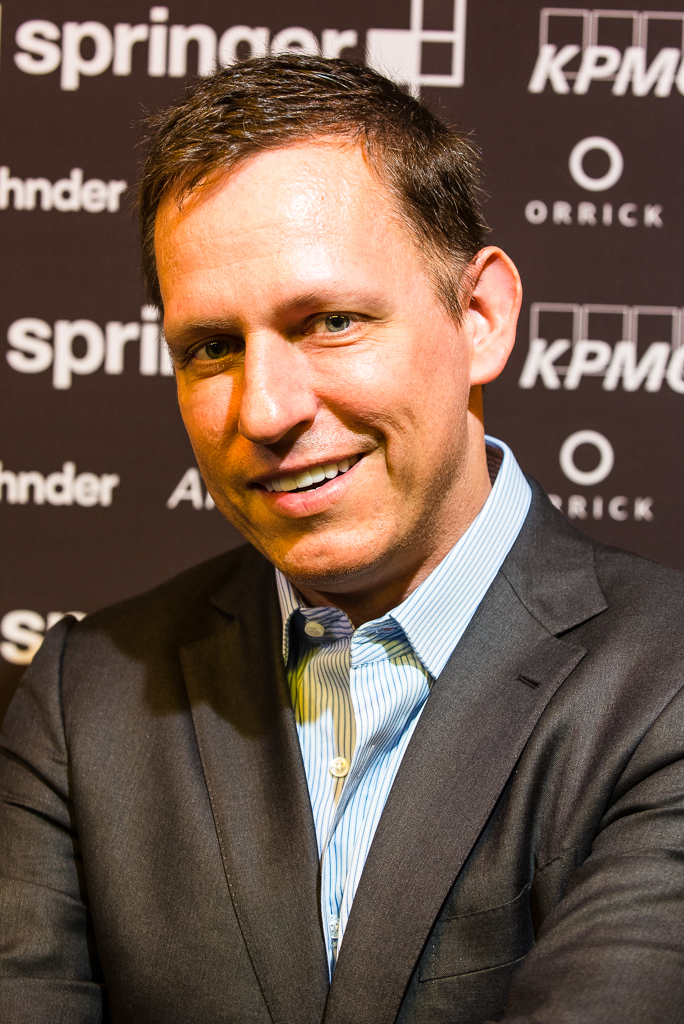 | |
| 2007 (September) | Literature | Regenerative medicine | Aubrey De Grey publishes Ending Aging: The Rejuvenation Breakthroughs That Could Reverse Human Aging in Our Lifetime, which proposes eliminating aging as a cause of debilitation and death in humans, and restoring the body to an indefinitely youthful state. The book introduces a project plan called "strategies for engineered negligible senescence", a range of proposed regenerative medical therapies for periodical repair of all age-related damage to human tissue.[59] | |
| 2009 | Congress | Anti-aging is identified as one of the specific topics to be considered at the 19th World Congress of Gerontology and Geriatrics in Paris.[36] | ||
| 2009 | Organization (non-profit) | Regenerative medicine | Aubrey de Grey and several others found the SENS Research Foundation with aims at conducting research into aging and funding other anti-aging research projects at various universities.[60][61][62] It offers research grants, internships and post-baccalaureate programmes, and organizes numerous conferences | |
| 2009 | Industry | Hormone therapy | The industry that promotes the use of hormones as a treatment for consumers to slow or reverse the aging process generates about US$50 billion of revenue in the year in the United States.[63] | |
| 2009 | Scientific development | A review of longevity research notes: "Extrapolation from worms to mammals is risky at best, and it cannot be assumed that interventions will result in comparable life extension factors. Longevity gains from dietary restriction, or from mutations studied previously, yield smaller benefits to Drosophila than to nematodes, and smaller still to mammals. This is not unexpected, since mammals have evolved to live many times the worm's lifespan, and humans live nearly twice as long as the next longest-lived primate. From an evolutionary perspective, mammals and their ancestors have already undergone several hundred million years of natural selection favoring traits that could directly or indirectly favor increased longevity, and may thus have already settled on gene sequences that promote lifespan. Moreover, the very notion of a "life-extension factor" that could apply across taxa presumes a linear response rarely seen in biology."[64] | ||
| 2009 | Recognition | Award | The Methuselah Foundation awards the first Mprize Lifespan Achievement Award is given to Z. Dave Sharp of the University of Texas Health Science Center at San Antonio for extending the lifespan of already aged mice using the pharmaceutical rapamycin.[65] | |
| 2011 | Organization (public company) | Drug therapy | Unity Biotechnology is founded.[66][67] It develops drugs which target senescent cells.[68][69][70] |  |
| 2011 (February) | Organization | Brain–computer interface | 2045 Initiative is founded by Russian entrepreneur Dmitry Itskov, with the purpose "to create technologies enabling the transfer of an individual’s personality to a more advanced non-biological carrier, and extending life, including to the point of immortality. We devote particular attention to enabling the fullest possible dialogue between the world’s major spiritual traditions, science and society".[71] | |
| 2011 | Literature | American author Sonia Arrison publishes 100 Plus: How the Coming Age of Longevity Will Change Everything, From Careers and Relationships to Family and Faith, which elaborates on how life-extending discoveries will change our social and economic worlds.[72] |  | |
| 2012 | Politics | By this time, there are Longevity political parties in Russia, the United States, Israel, and the Netherlands. These aim to provide political support to radical life extension research and technologies, and ensure the fastest possible and at the same time soft transition of society to the next step – life without aging and with radical life extension, and to provide access to such technologies to most currently living people.[73] | ||
| 2013 (January) | Organization (non-profit) | The International Longevity Alliance is founded. It is an international nonprofit organization that serves as an interaction between regional organizations that support anti-aging technologies.[74] | ||
| 2013 (February) | Recognition | The Breakthrough Prize in Life Sciences is first awarded. Funded by internet entrepreneurs Mark Zuckerberg and Priscilla Chan of Facebook; Sergey Brin of Google; entrepreneur and venture capitalist Yuri Milner; and 23andMe co–founder Anne Wojcicki, the US$3 million prizeis awarded for research aimed at curing intractable diseases and extending human life. The ceremony takes place in the San Francisco Bay Area, with the symposiums alternating between University of California, Berkeley, University of California, San Francisco, and Stanford University.[75].[76][77] Eleven inaugural laureates are announced: Cornelia I. Bargmann (Rockefeller University), David Botstein (Princeton University), Lewis C. Cantley (Harvard Medical School, Weill Cornell Medical College), Hans Clevers (Hubrecht Institute), Titia de Lange (Rockefeller University), Napoleone Ferrara (University of California, San Diego), Eric S. Lander (Massachusetts Institute of Technology, Broad Institute), Charles L. Sawyers (Howard Hughes Medical Institute, Memorial Sloan-Kettering Cancer Center), Robert A. Weinberg (Massachusetts Institute of Technology, Whitehead Institute), Shinya Yamanaka (Kyoto University, J. David Gladstone Institutes, University of California, San Francisco), and Bert Vogelstein (Howard Hughes Medical Institute, Johns Hopkins University).[78] |  | |
| 2013 | Public opinion | A Spring Pew Research poll in the United States finds that 38% of citizens would want life extension treatments, and 56% would reject it. However, it also finds that 68% believe most people would want it and that only 4% consider an "ideal lifespan" to be more than 120 years. The median "ideal lifespan" is 91 years of age and the majority of the public (63%) view medical advances aimed at prolonging life as generally good. 41% believe that radical life extension (RLE) would be good for society, while 51% say they believe it would be bad for society.[79] | ||
| 2013 | Organization (subsidiary) | Biotechnology | Google announces launch of research and development biotech subsidiary Calico, with the purpose of harnessing new technologies to increase scientific understanding of the biology of aging.[80] American researcher Arthur D. Levinson is named CEO of Calico.[81] | |
| 2013 | Organization (public company) | Senolytics | Recursion Pharmaceuticals is founded. Based in Salt Lake City, it develops a drug discovery platform and pipeline with machine learning.[54][82] | |
| 2013 | Organization (private company | Machine learning | Human Longevity is launched by Craig Venter and Peter Diamandis as a venture with the goal to build the world's most comprehensive database on human genotypes and phenotypes, and then subject it to machine learning so that it can help develop new ways to fight diseases associated with aging.[83] | 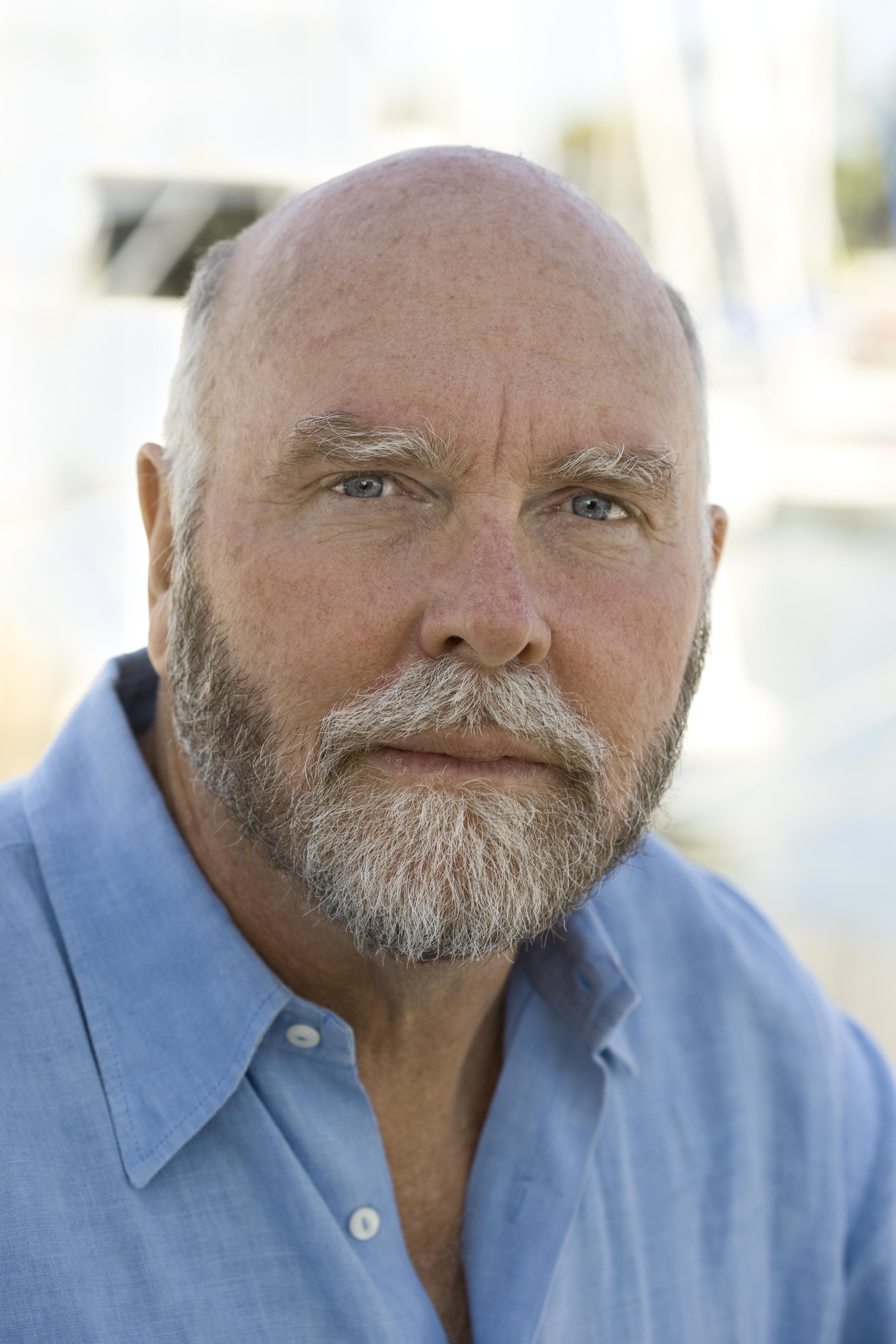 |
| 2014 | Organization (non-profit) | Basic research | The Life Extension Advocacy Foundation is founded as a non-profit organization with mission to support fundamental research on the main mechanisms of aging and age-related diseases, and educate the public on the possibility of bringing aging under medical control in order to prevent, postpone and cure age-related diseases.[84] | |
| 2014 | Recognition | Award | The Breakthrough Prize in Life Sciences is awarded to James P. Allison, Mahlon DeLong, Michael N. Hall, Robert Langer, Richard P. Lifton, and Alexander Varshavsky.[85] |  |
| 2014 | Organization (private company) | Senolytics | Oisín Biotechnologies is founded. Based in Seattle, it focuses on mitigating the senolytic technology to combat age-related diseases. The company conducts gene therapy with caspase-9 activated in p16-positive cells.[86][87][54] | |
| 2015 | Organization (private company) | Biotechnology | BioViva is founded by Elizabeth Parrish as a biotechnology company with the purpose to treat aging cells and reverse aging.[88] | |
| 2015 | Literature | S. Jay Olshansky, Jim Kirkland and George Martin publish Aging: The Longevity Dividend, which examines the biological basis of aging, strategies that may extend health span, and the societal implications of delayed aging.[89] | ||
| 2015 | Recognition | Award | The Breakthrough Prize in Life Sciences is awarded to Alim-Louis Benabid (Joseph Fourier University), C. David Allis (The Rockefeller University), Victor Ambros (University of Massachusetts Medical School), Gary Ruvkun (Massachusetts General Hospital and Harvard Medical School), and Jennifer Doudna (University of California, Berkeley).[90] |  |
| 2016 | Scientific development | Bioinformatics, deep learning | Hong Kong-based Insilico Medicine initiates a research collaboration with Life Extension to apply advanced bioinformatic methods and deep learning algorithms to screen for naturally occurring compounds that may slow down or even reverse the cellular and molecular mechanisms of aging.[91] | |
| 2016 (September 25) | Documentary film | Documentary film titled The Future of Work and Death is released, casting personalities such as Aubrey de Grey and Zoltan Istvan.[92] | ||
| 2016 | Organization | Drug therapy | Five Alarm Bio is founded. IT develops a drug discovery platform designed to research on therapies to fight against aging.[93] | |
| 2016 | Scientific development | Regenerative medicine | As part of the implementation of the SENS programs, researchers manage to make two mitochondrial genes, ATP8 and ATP6, stably express from the cell nucleus in the cell culture.[94] | |
| 2016 | Organization (for profit) | Telomere therapy | Rejuvenation Technologies is founded as a biotechnology company. Based in Mountain View, California, it develops nucleoside-modified TERT mRNA to safely and rapidly extend telomeres.[95] | |
| 2016 | Organization (private company) | Senolytics | OneSkin is founded. Based in San Francisco, it designs anti-aging molecules that fights with skin aging..[54][96] | |
| 2016 | Recognition | Award | The Breakthrough Prize in Life Sciences is awarded to Edward S. Boyden (Massachusetts Institute of Technology), Karl Deisseroth (Stanford University and Howard Hughes Medical Institute), John Hardy (University College London), Helen Hobbs (University of Texas Southwestern Medical Center and Howard Hughes Medical Institute), and Svante Pääbo (Max Planck Institute for Evolutionary Anthropology).[97] | |
| 2017 | Industry | Young blood transfusion | Californian start-up Ambrosia begins selling blood plasma from young human donors as an anti-aging therapy, based on parabiosis mouse-models. This business would cease shortly after a 2019 FDA warning against anti-aging blood transfusion.[29] | |
| 2017 | Organization (private company) | Senolytics | Numeric Biotech is founded. Based in Rotterdam, Netherlands[98], it focuses on selective targeting of FOXO4-p53, a pair of human transcription factors known to promote senescence by interacting in the promyelocytic leukemia bodies.[54][99] | |
| 2017 | Organization (public company) | Stem cell therapy, tissue regeneration | AgeX Therapeutics is established by American biogerontologist Michael D. West, with the mission "to develop and commercialize novel therapeutics targeting biological aging based on an emerging understanding of the ‘clockwork mechanisms’ of human aging."[100][101] |  |
| 2017 | Organization (private company) | Senolytics | Eternans is founded. Based in the United Kingdom, it develops senolytic agents for the treatment of senescence-associated diseases and disorders by selectively killing senescent cells.[102][54] | |
| 2017 | Recognition | Award | The Breakthrough Prize in Life Sciences is awarded to Stephen J. Elledge (Brigham and Women’s Hospital, Harvard Medical School and Howard Hughes Medical Institute), Harry F. Noller (University of California, Santa Cruz), Roeland Nusse (Stanford University and Howard Hughes Medical Institute), Yoshinori Ohsumi (Tokyo Institute of Technology), and Huda Yahya Zoghbi (Baylor College of Medicine, Texas Children’s Hospital and Howard Hughes Medical Institute).[103] |  |
| 2018 | Organization (private company) | Senolytics | Rubedo Life Sciences is founded. It specializes in small-molecule senolytics. This company engineers small molecules to be selectively activated in pathological cells that drive age-related diseases.[54][104] It is based in Sunnyvale, California.[105] | |
| 2018 | Organization (private company) | Senolytics | Longevity biotech company Genome Protection is founded. Based in Buffalo, New York, it focuses on stimulating innate immunity to eradicate genome-compromised cells. Its is to develop such treatments to significantly prolong healthy lifespan and protect against the many diseases of aging.[106][54] | |
| 2018 | Organization (accelerator) | Funding | New Zealander venture capitalist Laura Deming launches Age1, a four-month startup accelerator program focused on founders creating longevity companies.[107] |  |
| 2018 | Organization (private company) | Deciduous Therapeutics is founded. Based in San Francisco, California, it focuses on activating immune cells to clear senescent cells.[54][108] | ||
| 2018 | Organization (private company) | Senolytics | Dorian Therapeutics is founded. Based in San Carlos, California, it works on senoblockers, a new class of therapeutics that can rejuvenate cells and tissues.[109][54] | |
| 2018 | Recognition | Award | The Breakthrough Prize in Life Sciences is awarded to Joanne Chory (Salk Institute for Biological Studies and Howard Hughes Medical Institute), Peter Walter (University of California, San Francisco and Howard Hughes Medical Institute), Kazutoshi Mori (Kyoto University), Kim Nasmyth (University of Oxford), and Don W. Cleveland (University of California, San Diego).[110] | 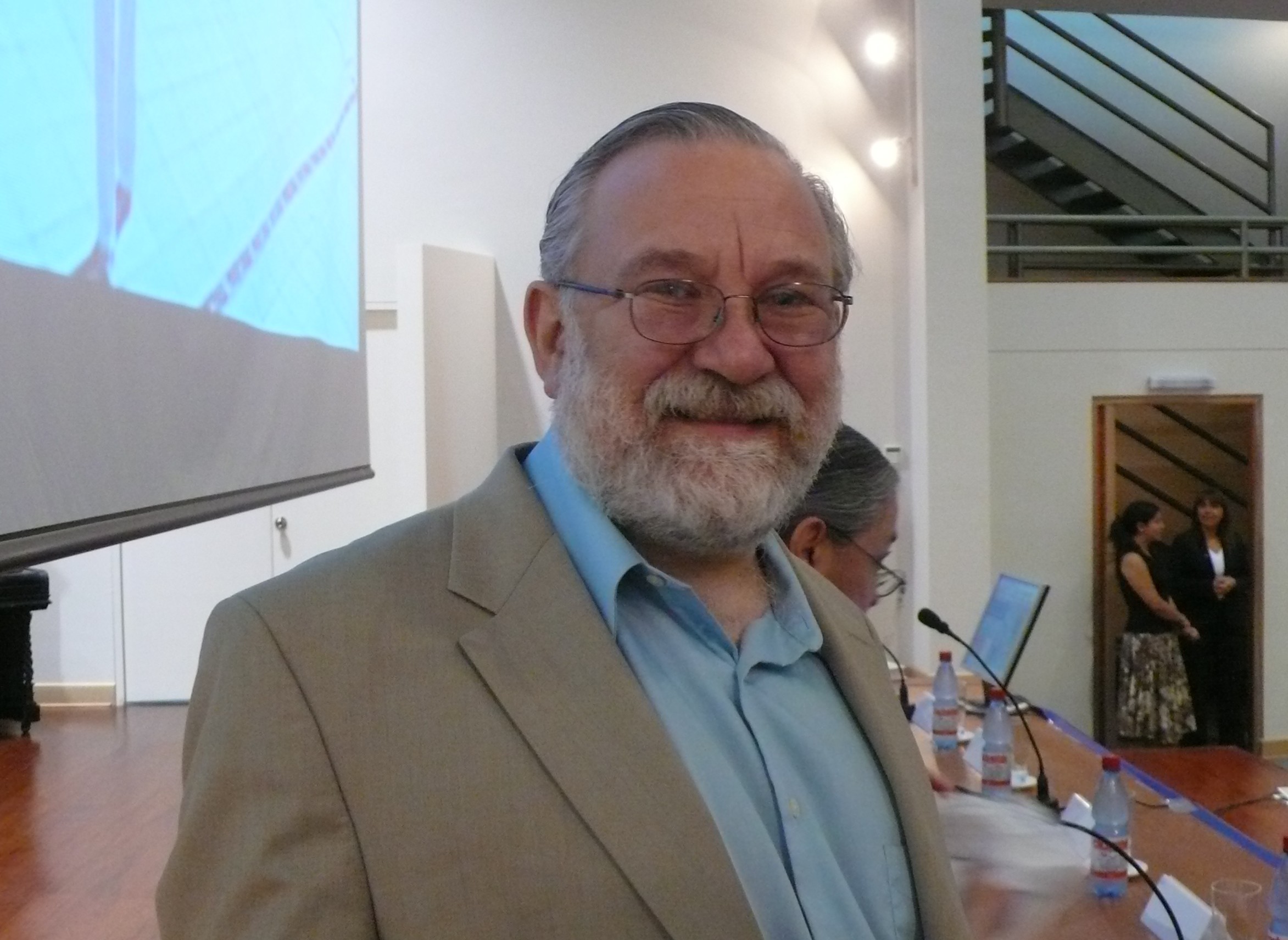 |
| 2018 | Organization (private company) | Cleara Biotech is founded. Based in Utrecht, Netherlands, it focuses on the development of safe and effective treatments to counter the negative aspects of aging and target diseases like therapy-resistant late stage cancer.[111][112][54] | ||
| 2018 | Organization (private company) | Drug therapy[113] | Atropos Therapeutics Inc. is established as a biopharmaceutical company focused on discovering and developing drugs against aging disorders and cancer using its proprietary senescence technology. It's headquartered in the San Francisco Bay Area.[114][115][116][54] | |
| 2018 | Organization (private company) | Senolytics | Geras Bio is incorporated. Based in San Francisco, California, it focuses on senescence-associated secretory phenotype (SASP) inhibitors.[117][54] | |
| 2018 | Organization (private company) | Senolytics | FoxBio is founded. Based in Lafayette, Louisiana, it develops small molecules techniques intended to reduce senescent cells in human bodies.[118] | |
| 2018 | Organization (private company) | Senolytics | Dialectic Therapeutics is founded. Based in Dallas, Texas, it focuses on systemic delivery of senolytic agents using proteolysis-targeting chimeras (PROTACs).[119][54] | |
| 2019 | Recognition | Award | The Breakthrough Prize in Life Sciences is awarded to C. Frank Bennett (Ionis Pharmaceuticals), Adrian R. Krainer (Cold Spring Harbor Laboratory, Cold Spring Harbor), Angelika Amon (Massachusetts Institute of Technology), Xiaowei Zhuang (Harvard University and Howard Hughes Medical Institute), and Zhijian James Chen (UT Southwestern Medical Center and Howard Hughes Medical Institute).[120] |  |
| 2019 | Organizatin (for profit) | Funding | Rejuveron Life Sciences is founded. Based in Zürich, it is an integrated biotechnology platform company that invests in people and ideas to develop therapies and technologies to improve healthy aging and prolong lifespan.[121][122][123] | |
| 2020 | Recognition | Award | The Breakthrough Prize in Life Sciences is awarded to Jeffrey M. Friedman (Rockefeller University and Howard Hughes Medical Institutem), F. Ulrich Hartl (Max Planck Institute of Biochemistry), Arthur L. Horwich (Yale School of Medicine and Howard Hughes Medical Institute), David Julius (University of California, San Francisco), and Virginia M.-Y. Lee (University of Pennsylvania).[124] |  |
| 2020 | Organization (private company) | Senolytics | 1E Therapeutics is founded. Based in Israel, it focuses on antisense oligonucleotide–based senolytics.[54] | |
| 2020 | Partnership | Senolytics | Insilico Medicine partners with Taisho Pharmaceutical with the purpose to identify novel therapeutics against aging by pursuing end-to-end AI-powered senolytic drug discovery.[125] | |
| 2020 | Organization (private company) | Senolytics | NRTK Biosciences is founded. It focuses on synthetic optimization of approved drugs and supplements.[54] | |
| 2020 | Organization (private company) | Senolytics | Rejuversen AG is founded. It is a biotech company focused on immune-mediated clearance of senescence cells.[54][126] | |
| 2020 | Organization (private company) | Senolytics | Senisca is founded. Based in Exeter, United Kingdom, it develops a new generation of senotherapeutic interventions to target the diseases and aesthetic signs of ageing.[54][127] | |
| 2020 (July) | Scientific development | Scientists, using public biological data on 1.75 million people with known lifespans overall, identify 10 genomic loci which appear to intrinsically influence healthspan, lifespan, and longevity – of which half have not been reported previously at genome-wide significance and most being associated with cardiovascular disease – and identify haem metabolism as a promising candidate for further research within the field. Their study suggests that high levels of iron in the blood likely reduce, and genes involved in metabolising iron likely increase healthy years of life in humans.[128][129] | ||
| 2021 | Recognition | Award | The Breakthrough Prize in Life Sciences is awarded to David Baker (University of Washington and Howard Hughes Medical Institute), Catherine Dulac (Harvard University and Howard Hughes Medical Institute), Yuk Ming Dennis Lo (The Chinese University of Hong Kong), and Richard J. Youle (National Institutes of Health).[130] |  |
| 2030 | Scientific development | Nanotechnology | According to Raymond Kurzweil's The Singularity Is Near, advanced medical nanorobotics could completely remedy the effects of aging by this time.[131] |
Numerical and visual data
Google Scholar
The following table summarizes per-year mentions on Google Scholar as of June 28, 2021.
| Year | radical life extension | radical life extension ethics | radical life extension enhancement | radical life extension immortality | slow aging | slow aging interventions |
|---|---|---|---|---|---|---|
| 1980 | 5,370 | 2,750 | 2,890 | 741 | 4,320 | 606 |
| 1985 | 6,530 | 3,670 | 4,020 | 948 | 5,470 | 929 |
| 1990 | 11,300 | 6,430 | 7,760 | 1,390 | 9,370 | 1,730 |
| 1995 | 16,600 | 10,400 | 10,900 | 2,110 | 12,500 | 2,800 |
| 2000 | 31,100 | 17,600 | 17,600 | 3,400 | 22,600 | 5,250 |
| 2002 | 38,900 | 18,600 | 18,800 | 4,080 | 27,000 | 6,990 |
| 2004 | 41,100 | 20,400 | 19,400 | 4,590 | 32,000 | 8,790 |
| 2006 | 45,200 | 22,100 | 20,200 | 4,650 | 39,600 | 9,510 |
| 2008 | 51,000 | 23,300 | 20,800 | 5,430 | 47,100 | 12,900 |
| 2010 | 53,000 | 23,500 | 21,500 | 6,470 | 55,300 | 15,200 |
| 2012 | 65,000 | 29,000 | 23,100 | 7,680 | 65,800 | 18,500 |
| 2014 | 63,100 | 28,800 | 23,600 | 8,420 | 66,900 | 20,900 |
| 2016 | 64,800 | 35,800 | 24,000 | 8,930 | 65,800 | 22,400 |
| 2017 | 60,100 | 36,500 | 23,800 | 8,600 | 64,100 | 23,300 |
| 2018 | 49,100 | 36,900 | 22,500 | 8,800 | 54,000 | 24,400 |
| 2019 | 47,600 | 36,900 | 24,400 | 8,240 | 51,800 | 25,300 |
| 2020 | 40,700 | 34,100 | 25,000 | 7,610 | 41,700 | 23,700 |
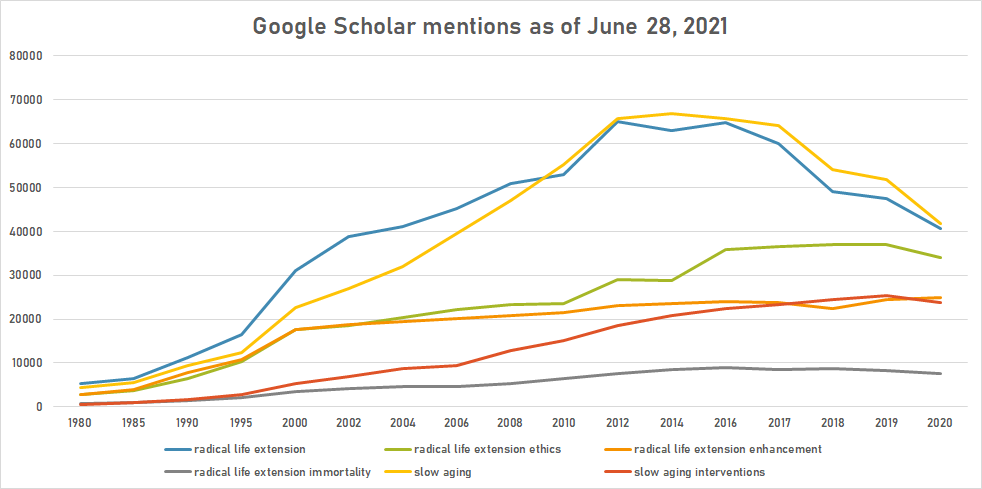
Google Trends
The chart below shows Google Trends data for Negligible senescence (Topic), from January 2004 to June 2021, when the screenshot was taken. Interest is also ranked by country and displayed on world map.[132]
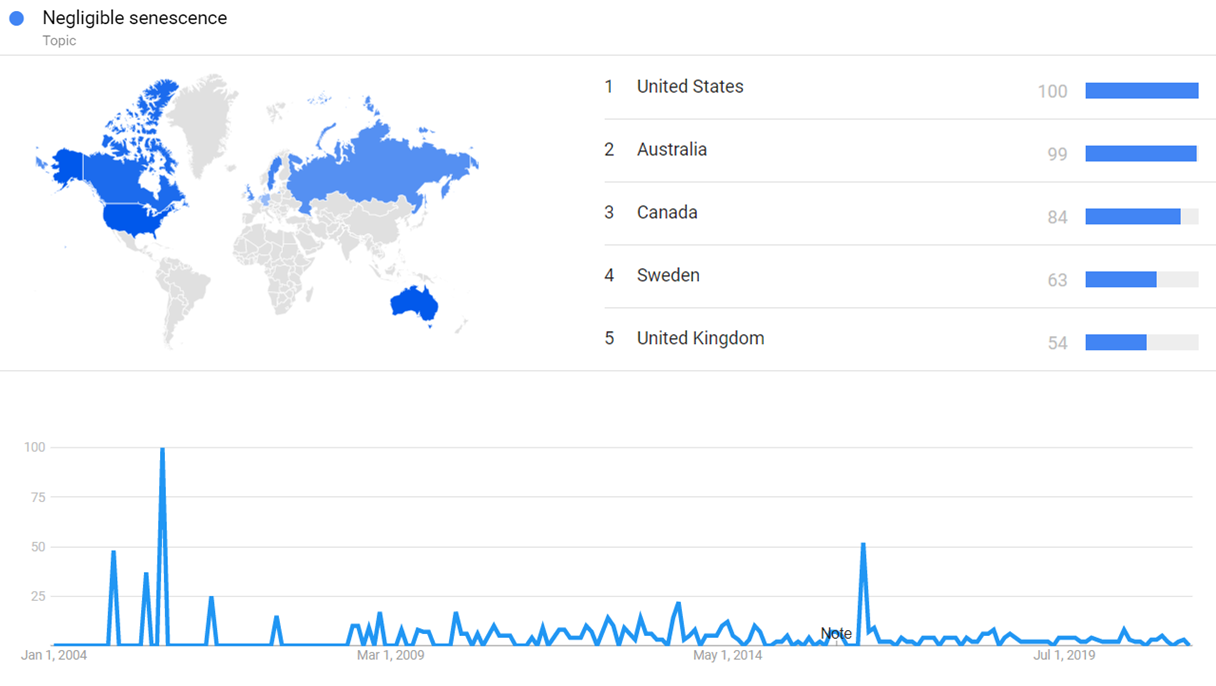
Google Ngram Viewer
The comparative chart below shows Google Ngram Viewer data for radical life extension, negligible senescence and reverse aging, from 1900 to 2019. [133]
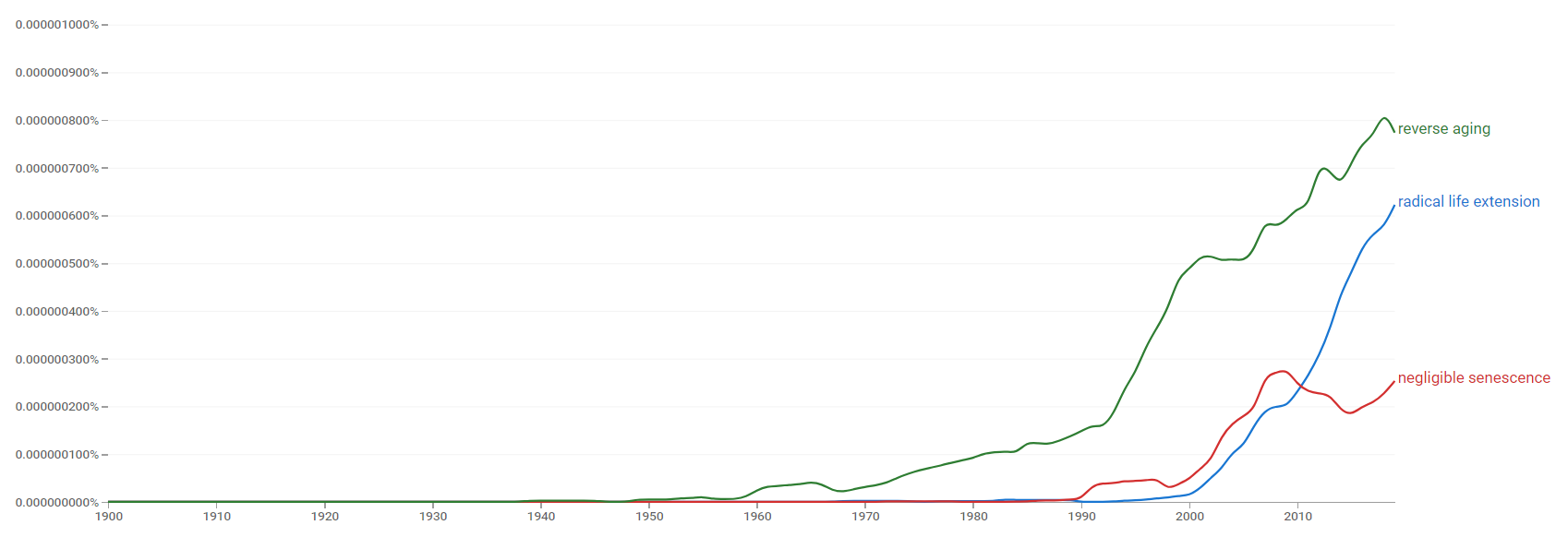
Wikipedia Views
The chart below shows pageviews of the English Wikipedia article Life extension, from July 2015 to May 2021.[134]
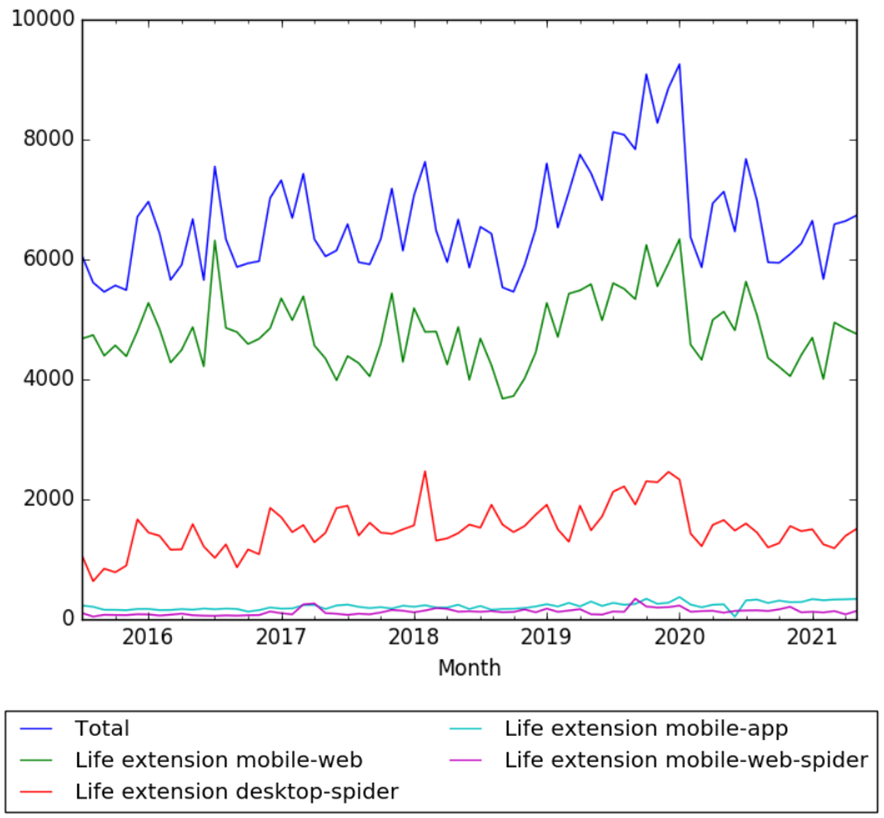
Meta information on the timeline
How the timeline was built
The initial version of the timeline was written by User:Sebastian.
Funding information for this timeline is available.
Feedback and comments
Feedback for the timeline can be provided at the following places:
- FIXME
What the timeline is still missing
- [1]
- [2]
- [3]
- Category:Anti-aging substances
- Index of topics related to life extension
- Category:Life extensionists
- Category:Life extension
Timeline update strategy
See also
- Timeline of senescence research
- Timeline of transhumanism
- Timeline of calorie restriction
- Timeline of brain preservation
- Timeline of biohacking
External links
References
- ↑ Wilson, Robert Anton (November 1978). "Next Stop, Immortality". Future Life (6). Retrieved 22 June 2021.
- ↑ 2.0 2.1 A History of Life-Extensionism In The Twentieth Century. Rison Lezion, Israel: Longevity History. 2014. ISBN 1500818577.
- ↑ Zhavoronkov, Alexander; Bhupinder, Bhullar (4 October 2015). "Classifying aging as a disease in the context of ICD-11". Frontiers in Genetics. 6: 326. doi:10.3389/fgene.2015.00326. PMC 4631811. PMID 26583032.
{{cite journal}}: CS1 maint: unflagged free DOI (link) - ↑ Stambler, Ilia (1 October 2017). "Recognizing Degenerative Aging as a Treatable Medical Condition: Methodology and Policy". Aging and Disease. 8 (5): 583–589. doi:10.14336/AD.2017.0130. PMC 5614323. PMID 28966803.
- ↑ "Opening the door to treating ageing as a disease". The Lancet Diabetes & Endocrinology. 6 (8): 587. 1 August 2018. doi:10.1016/S2213-8587(18)30214-6.
- ↑ Calimport, Stuart; et al. (1 October 2019). "To help aging populations, classify organismal senescence". Science. 366 (6465): 576–578. doi:10.1126/science.aay7319.
- ↑ Khaltourina, Daria; Matveyev, Yuri; Alekseev, Aleksey; Cortese, Franco; Ioviţă, Anca (July 2020). "Aging Fits the Disease Criteria of the International Classification of Diseases". Mechanisms of Ageing and Development. 189: 111230. doi:10.1016/j.mad.2020.111230.
- ↑ Davies, Howard; Rašković, Matevž (23 August 2017). Understanding a Changing China: Key Issues for Business. Routledge. ISBN 978-1-315-47091-7.
- ↑ 9.0 9.1 Haber, C. (1 June 2004). "Anti-Aging Medicine: The History: Life Extension and History: The Continual Search for the Fountain of Youth". The Journals of Gerontology Series A: Biological Sciences and Medical Sciences. 59 (6): B515 – B522. doi:10.1093/gerona/59.6.B515.
- ↑ Lives, Dissected (22 November 2019). Ponce de Leon and His Search for the Fountain of Youth | Biography for Kids Grade 3 | Children's Historical Biographies. Speedy Publishing LLC. ISBN 978-1-5419-5606-3.
- ↑ Hurwicz, Claude (2001). Juan Ponce de Leon. The Rosen Publishing Group. ISBN 978-0-8239-5563-3.
- ↑ Heinrichs, Ann (2002). Ponce de Le„n: Juan Ponce de Le„n Searches for the Fountain of Youth. Capstone. ISBN 978-0-7565-1148-7.
- ↑ 13.0 13.1 13.2 В.Е. Чернилевский, В.Н. Крутько (2000). "История изучения средств продления жизни" [History of studying the means of extending life] (in русский). National Gerontology Center (of Russia). Retrieved 5 May 2021.
- ↑ 14.0 14.1 14.2 Stambler I (June 2014). "The unexpected outcomes of anti-aging, rejuvenation, and life extension studies: an origin of modern therapies". Rejuvenation Research. 17 (3): 297–305. doi:10.1089/rej.2013.1527. PMID 24524368.
- ↑ 15.0 15.1 15.2 15.3 Ilia Stambler (17 February 2021). "Have anti-aging interventions worked? Some lessons from the history of anti-aging experiments" (video). YouTube.
- ↑ 16.0 16.1 Haber C (June 2004). "Life extension and history: the continual search for the fountain of youth". The Journals of Gerontology: Series A. 59 (6): B515-22. doi:10.1093/gerona/59.6.B515. PMID 15215256.
- ↑ Hamowy, Ronald. Government and Public Health in America. Retrieved 21 December 2016.
- ↑ "NATIONAL SOCIETY TO CONSERVE LIFE; Life Extension Institute Formed to Teach Hygiene and Prevention of Disease. LARGE CAPITAL BEHIND IT Ex-President Taft, Chairman; Prof. Irving Fisher, E.E. Rittenhouse, and Others Direct It". The New York Times. 1913-12-30. Retrieved 17 June 2021.
- ↑ Krischel, Matthis; Hansson, Nils (June 2017). "Rejuvenation study stirs old memories". Nature. 546 (7656): 33–33. doi:10.1038/546033e.
- ↑ "Nomination Archive | Eugen Steinach". nobelprize.org. April 2020. Retrieved 26 April 2021.
- ↑ Chaisinthop N (2013). "What is Fresh Cell Therapy?" (PDF). Archived from the original (PDF) on 22 February 2016.
- ↑ Robyn MP, Newman AP, Amato M, Walawander M, Kothe C, Nerone JD, et al. (October 2015). "Q Fever Outbreak Among Travelers to Germany Who Received Live Cell Therapy--United States and Canada, 2014". MMWR. Morbidity and Mortality Weekly Report. 64 (38): 1071–3. doi:10.15585/mmwr.mm6438a3. PMID 26421460.
- ↑ "Dr. Janson-Müller: Hintergründe".
- ↑ 24.0 24.1 Stambler, Ilia (29 August 2014). "Allies – The Kingdom of Great Romania. Dimu Kotsovsky". A History of Life-Extensionism in the Twentieth Century. Longevity History. p. 540. ISBN 978-1500818579.
- ↑ "plenty-web". web.archive.org. 2010-02-11.
- ↑ "The big chill // Some opt for cryonics following death". Tulsa World. Retrieved 23 June 2021.
- ↑ Heard, Alex (1997-09-28). "Technology makes us optimistic; They want to live". New York Times. Retrieved 9 June 2021.
- ↑ Rose, Steve (2004-01-23). "Stephen Valentine talks about the battle to conquer death". London: The Guardian. Retrieved 9 June 2021.
- ↑ 29.0 29.1 29.2 Fletcher, James Rupert (December 2020). "Anti-aging technoscience & the biologization of cumulative inequality: Affinities in the biopolitics of successful aging". Journal of Aging Studies. 55: 100899. doi:10.1016/j.jaging.2020.100899. ISSN 0890-4065.
- ↑ Kreidler, Marc (2003-03-20). "Book Review: Life Extension: A Practical Scientific Approach (1982) | Quackwatch".
- ↑ Pearson, Durk; Shaw, Sandy (1983). Life Extension: A Practical Scientific Approach. Warner Books. ISBN 978-0-446-87990-3.
- ↑ Almond, Steven. "They're Gonna Live Forever". Miami New Times.
- ↑ Nuwer, Rachel (4 July 2014). "Keeping Track of the Oldest People in the World". Smithsonion.com. Retrieved 3 January 2015.
- ↑ White, Gayle (8 February 2006). "Supercentenarians giving researchers clues on longevity". Chicago Tribune. Cox News Service. Retrieved 3 January 2015.
- ↑ Binstock, Robert H. (February 2003). "The War on "Anti-Aging Medicine"". The Gerontologist. 43 (1): 4–14. doi:10.1093/geront/43.1.4.
- ↑ 36.0 36.1 36.2 Fishman, Jennifer R.; Binstock, Robert H.; Lambrix, Marcie A. (2008-12-01). "Anti-aging science: The emergence, maintenance, and enhancement of a discipline". Journal of aging studies. 22 (4): 295–303. ISSN 0890-4065.
- ↑ LLC, Sierra Sciences. "Sierra Sciences' Plan to Cure Aging is Validated by Newly Published Proof of Concept Experiment". www.prnewswire.com. Retrieved 15 June 2021.
- ↑ de Grey, Aubrey (November 2003). The Mitochondrial Free Radical Theory of Aging. Austin, Texas: Landes Bioscience.
- ↑ Carnes, Bruce A.; Olshansky, S. Jay (17 July 2002). The Quest for Immortality: Science at the Frontiers of Aging. W. W. Norton & Company. ISBN 978-0-393-24588-2.
- ↑ 40.0 40.1 "The Future of Aging: Pathways to Human Life Extension". 2010. doi:10.1007/978-90-481-3999-6.
{{cite journal}}: Cite journal requires|journal=(help) - ↑ "WHOIS Lookup - Domain Lookup and Availability Checker | Domain.com". www.domain.com. Retrieved 27 August 2021.
- ↑ Methuselah Foundation - About
- ↑ "Methuselah Foundation Launches Methuselah Fund". Fight Aging!. 2017-03-22.
- ↑ Watkins, Jenn (2009-01-16). "Researchers seek to create 'fountain of youth'".
- ↑ "VASCULAR TISSUE CHALLENGE". web.archive.org. Retrieved 27 August 2021.
- ↑ Williams, Matt. "History of Challenges: New Organ Prize (2013 - Present)". HeroX. Retrieved 2018-03-02.
- ↑ Mannix, Liam (22 December 2017). "Fountain of youth: Australian scientists in race to find a cure for ageing". The Sydney Morning Herald. Retrieved 18 March 2021.
- ↑ West, Michael D. (2003). The Immortal Cell: One Scientist's Quest to Solve the Mystery of Human Aging. Doubleday. ISBN 978-0-385-50928-2.
- ↑ de Grey, ADNJ (2004-06-15). "Escape velocity: why the prospect of extreme human life extension matters now". PLoS Biol. 2 (6): 723–726. doi:10.1371/journal.pbio.0020187. PMC 423155. Retrieved 2021-04-03.
{{cite journal}}: CS1 maint: unflagged free DOI (link) - ↑ Dibbell, Julian (2006-10-23), "The Fast Supper", New York Magazine
- ↑ December 2004, Bill Christensen 01. "First Methuselah Mouse Rejuvenation 'M Prize' Awarded". livescience.com. Retrieved 9 July 2021.
{{cite web}}: CS1 maint: numeric names: authors list (link) - ↑ "New book released — Fantastic Voyage: Live Long Enough to Live Forever « Kurzweil". kurzweilai.net. Retrieved 23 June 2021.
- ↑ "Young Blood Plasma Reduces the Epigenetic Age of Rats by 54%". www.regenerativemedicinedaily.com. Retrieved 12 June 2021.
- ↑ 54.00 54.01 54.02 54.03 54.04 54.05 54.06 54.07 54.08 54.09 54.10 54.11 54.12 54.13 54.14 54.15 54.16 54.17 "Table 1 Selected biotech companies focused on senolytics". nature.com. Retrieved 17 August 2021.
- ↑ "SIWA Therapeutics - Crunchbase Company Profile & Funding". Crunchbase. Retrieved 27 August 2021.
- ↑ Kamel, Nabil S; Julie Gammack; Oscar Cepeda; Joseph H Flaherty (2006). "Antioxidants and hormones as antiaging therapies: high hopes, disappointing results". Cleveland Clinic Journal of Medicine. 73 (12): 1049–1056, 1058. doi:10.3949/ccjm.73.12.1049. ISSN 0891-1150. PMID 17190308.
- ↑ "WebCite query result". www.webcitation.org. Retrieved 11 April 2021.
{{cite web}}: Cite uses generic title (help) - ↑ Davidson, Keay (18 September 2006). "BAY AREA / Entrepreneur backs research on anti-aging / Scientist says humans could live indefinitely". SFGATE. Retrieved 11 April 2021.
- ↑ Grey, Aubrey de; Rae, Michael (2007-09-04). Ending Aging: The Rejuvenation Breakthroughs That Could Reverse Human Aging in Our Lifetime. St. Martin's Publishing Group. ISBN 978-1-4299-3183-0.
- ↑ Ben Best (2013) "Interview with Aubrey de Grey, PhD". Life Extension Magazine.
- ↑ "Jason Hope". Internet Entrepreneur Pledges A Donation To SENS Foundation - JasonHope.com. December 9, 2010.
- ↑ research report 2011. Sens Foundation
- ↑ Japsen, Bruce (15 June 2009). "AMA report questions science behind using hormones as anti-aging treatment". The Chicago Tribune. Retrieved 17 July 2009.
- ↑ Shmookler Reis, R. J.; Bharill, P; Tazearslan, C; Ayyadevara, S (2009). "Extreme-longevity mutations orchestrate silencing of multiple signaling pathways". Biochim Biophys Acta. 1790 (10): 1075–83. doi:10.1016/j.bbagen.2009.05.011. PMC 2885961. PMID 19465083.
- ↑ "Peter Thiel and Longevity". Medium. 28 July 2021. Retrieved 27 August 2021.
- ↑ "What's the Deal with Longevity Company Unity Biotechnology and its $700 Million Valuation?". BioSpace. Retrieved 26 March 2021.
- ↑ "Nathaniel David – Unity Biotechnology". unitybiotechnology.com. Retrieved 26 March 2021.
- ↑ "Mayo Clinic Taps Silicon Valley to Help People Age Gracefully". Fortune. Retrieved 10 June 2021.
- ↑ Detrixhe, John. "Crypto millionaires are funding research to reverse the aging process". Quartz. Retrieved 10 June 2021.
- ↑ Herkewitz, William (2016-02-03). "Scientists Can Now Radically Expand the Lifespan of Mice—and Humans May Be Next". Popular Mechanics. Retrieved 10 June 2021.
- ↑ "L'homme qui voulait devenir cyborg: conférence transhumaniste". Le Huffington Post (in français). 2013-06-25. Retrieved 9 June 2021.
- ↑ "100 Plus: How the Coming Age of Longevity Will Change Everything, From Careers and Relationships to Family and Faith « Kurzweil". kurzweilai.net. Retrieved 16 July 2021.
- ↑ "A Single-Issue Political Party for Longevity Science". Fight Aging!. 2012-07-27. Retrieved 22 June 2021.
- ↑ Josiah, Akinloye. "History — International Longevity Alliance". longevityalliance.org. Retrieved 17 June 2021.
- ↑ Rory Carroll (20 February 2013). "Breakthrough Prize announced by Silicon Valley entrepreneurs". The Guardian. Retrieved 20 February 2013.
- ↑ "Breakthrough Prize announced by Silicon Valley entrepreneurs". the Guardian. 2013-02-20. Retrieved 23 June 2021.
- ↑ "Silicon Valley Titans Launch Breakthrough Science Prize at UCSF". Silicon Valley Titans Launch Breakthrough Science Prize at UCSF | UC San Francisco. Retrieved 23 June 2021.
- ↑ "Breakthrough Prize announced by Silicon Valley entrepreneurs". the Guardian. 20 February 2013. Retrieved 15 July 2021.
- ↑ "Living to 120 and Beyond: Americans' Views on Aging, Medical Advances and Radical Life Extension". Pew Research Center's Religion & Public Life Project. 2013-08-06.
- ↑ Arion McNicoll, Arion (3 October 2013). "How Google's Calico aims to fight aging and 'solve death'". CNN.
- ↑ "Google announces Calico, a new company focused on health and well-being – News announcements – News from Google – Google". googlepress.blogspot.com. Retrieved 25 June 2021.
- ↑ "Recursion Pharmaceuticals - Crunchbase Company Profile & Funding". Crunchbase. Retrieved 27 August 2021.
- ↑ "'Supercharged' genomics: 100 years of breakthroughs possible in 10 years (Wired UK)". Wired.co.uk. Retrieved 9 June 2021.
- ↑ "Life Extension Advocacy Foundation Inc". www.guidestar.org. Retrieved 17 June 2021.
- ↑ "Breakthrough Prize – 2014 Breakthrough Prizes Awarded in Fundamental Physics and Life Sciences for a Total of $21 Million". breakthroughprize.org. Retrieved 15 July 2021.
- ↑ "Oisin Biotechnologies - Crunchbase Company Profile & Funding". Crunchbase. Retrieved 27 August 2021.
- ↑ "Oisín Biotechnologies". Oisín Biotechnologies. Retrieved 27 August 2021.
- ↑ "BioViva Moving Ahead With Human Gene Therapy for Telomerase Activation". Fight Aging!. 2015-10-02. Retrieved 9 June 2021.
- ↑ Olshansky, Stuart Jay; Martin, George M.; Kirkland, James L. (2016). Aging: The Longevity Dividend. Cold Spring Harbor Laboratory Press. ISBN 978-1-62182-163-2.
- ↑ "Breakthrough Prize – Recipients Of The 2015 Breakthrough Prizes In Fundamental Physics And Life Sciences Announced". breakthroughprize.org. Retrieved 15 July 2021.
- ↑ "Artificial intelligence enters the nutraceutical industry". EurekAlert!. Retrieved 23 June 2021.
- ↑ "The Future of Work and Death (2016) - IMDb". imdb.com. Retrieved 15 July 2021.
- ↑ "Five Alarm Bio Company Profile: Valuation & Investors | PitchBook". pitchbook.com. Retrieved 8 July 2021.
- ↑ Boominathan, Amutha; et al. (4 September 2016). "Stable nuclear expression of ATP8 and ATP6 genes rescues a mtDNA Complex V null mutant". Nucleic Acids Research. 44 (19): 9342–9357. doi:10.1093/nar/gkw756. PMC 5100594. PMID 27596602.
- ↑ "Rejuvenation Technologies - Crunchbase Company Profile & Funding". Crunchbase. Retrieved 17 July 2021.
- ↑ "OneSkin - Crunchbase Company Profile & Funding". Crunchbase. Retrieved 27 August 2021.
- ↑ "Breakthrough Prize – Breakthrough Prize Awarded $22 Million In Science Prizes". breakthroughprize.org. Retrieved 15 July 2021.
- ↑ "Numeric Biotech - Crunchbase Company Profile & Funding". Crunchbase. Retrieved 18 August 2021.
- ↑ "Numeric Biotech". www.numericbiotech.com. Retrieved 18 August 2021.
- ↑ "AgeX Therapeutics | About Us". agexinc.com. Retrieved 10 June 2021.
- ↑ "AgeX Therapeutics | AgeX Therapeutics". Retrieved 27 August 2021.
- ↑ "Home". www.eternans.com. Retrieved 17 August 2021.
- ↑ "Breakthrough Prize – Breakthrough Prize Marks 5th Anniversary Celebrating Top Achievements In Science And Awards More Than $25 Million In Prizes At Gala Ceremony In Silicon Valley". breakthroughprize.org. Retrieved 15 July 2021.
- ↑ "Home | Rubedo Life Science". Rubedo. Retrieved 27 August 2021.
- ↑ "Rubedo Life Sciences - Crunchbase Company Profile & Funding". Crunchbase. Retrieved 27 August 2021.
- ↑ "Genome Protection Inc". genomeprotection.com. Retrieved 18 August 2021.
- ↑ "One of the youngest fund managers in the U.S. just launched her own accelerator, too". TechCrunch. Retrieved 16 June 2021.
- ↑ "Deciduous Therapeutics - Crunchbase Company Profile & Funding". Crunchbase. Retrieved 17 August 2021.
- ↑ "Dorian Therapeutics - Crunchbase Company Profile & Funding". Crunchbase. Retrieved 17 August 2021.
- ↑ "Breakthrough Prize – Breakthrough Prize – "The Oscars Of Science" – Celebrates Top Achievements In Physics, Life Sciences & Mathematics, Awards $22 Million In Prizes At Gala Televised Ceremony In Silicon Valley". breakthroughprize.org. Retrieved 15 July 2021.
- ↑ "Cleara Biotech". clearabiotech.com. Retrieved 17 August 2021.
- ↑ "Cleara Biotech - Crunchbase Company Profile & Funding". Crunchbase. Retrieved 17 August 2021.
- ↑ "Atropos Therapeutics". Atropos Therapeutics. Retrieved 17 July 2021.
- ↑ "Atropos Therapeutics Inc". linkedin.com. Retrieved 17 July 2021.
- ↑ "Atropos Therapeutics - Crunchbase Company Profile & Funding". Crunchbase. Retrieved 17 July 2021.
- ↑ "Atropos Therapeutics - Crunchbase Company Profile & Funding". Crunchbase. Retrieved 17 August 2021.
- ↑ "GERAS BIO INC. :: California (US) :: OpenCorporates". opencorporates.com. Retrieved 18 August 2021.
- ↑ "FoxBio - Crunchbase Company Profile & Funding". Crunchbase. Retrieved 17 August 2021.
- ↑ "Dialectic Therapeutics - Crunchbase Company Profile & Funding". Crunchbase. Retrieved 17 August 2021.
- ↑ "Breakthrough Prize – Winners of the 2019 Breakthrough Prize in Life Sciences, Fundamental Physics and Mathematics Announced". breakthroughprize.org. Retrieved 15 July 2021.
- ↑ "Rejuveron | About us". rejuveron.com. Retrieved 17 July 2021.
- ↑ "Rejuveron Life Sciences AG". linkedin.com. Retrieved 17 July 2021.
- ↑ "Rejuveron Life Sciences - Crunchbase Investor Profile & Investments". Crunchbase. Retrieved 17 July 2021.
- ↑ "Breakthrough Prize – Winners Of The 2020 Breakthrough Prize In Life Sciences, Fundamental Physics And Mathematics Announced". breakthroughprize.org. Retrieved 15 July 2021.
- ↑ "Insilico partners with Taisho on end-to-end AI-powered senolytic drug discovery". EurekAlert!. Retrieved 18 August 2021.
- ↑ "Rejuvensen". Retrieved 27 August 2021.
- ↑ "Senisca - Crunchbase Company Profile & Funding". Crunchbase. Retrieved 27 August 2021.
- ↑ "Blood iron levels could be key to slowing ageing, gene study shows". phys.org. Retrieved 18 August 2020.
- ↑ Timmers, Paul R. H. J.; Wilson, James F.; Joshi, Peter K.; Deelen, Joris (December 2020). "Multivariate genomic scan implicates novel loci and haem metabolism in human ageing". Nature Communications. 11 (1): 3570. doi:10.1038/s41467-020-17312-3.
- ↑ "Breakthrough Prize – Winners Of The 2021 Breakthrough Prizes In Life Sciences, Fundamental Physics And Mathematics Announced". breakthroughprize.org. Retrieved 16 July 2021.
- ↑ Kurzweil, Ray (2005). The singularity is near : when humans transcend biology. New York: Viking. ISBN 978-0-670-03384-3.
- ↑ "Negligible senescence". Google Trends. Retrieved 29 June 2021.
- ↑ "radical life extension, negligible senescence and reverse aging". books.google.com. Retrieved 29 June 2021.
- ↑ "Life extension". wikipediaviews.org. Retrieved 29 June 2021.

